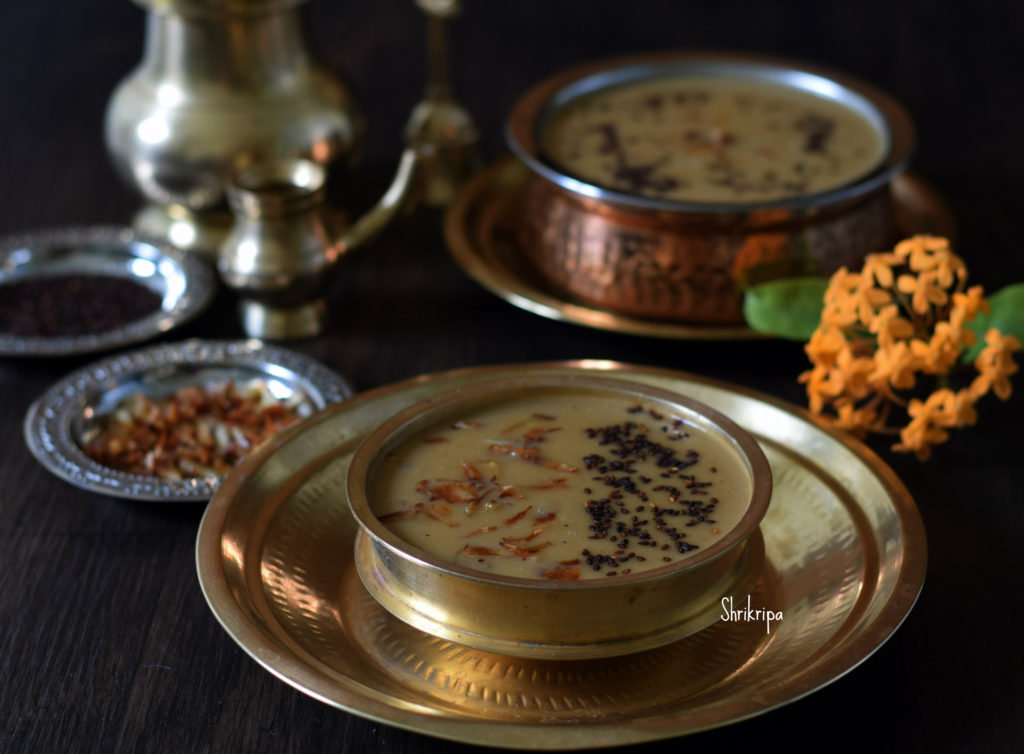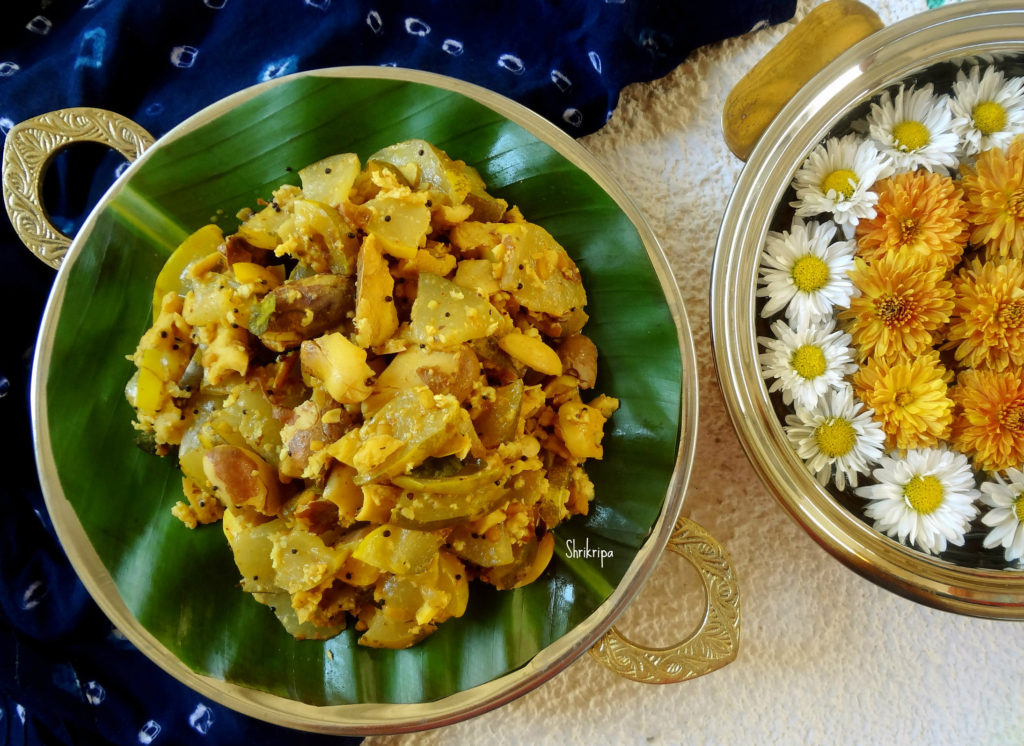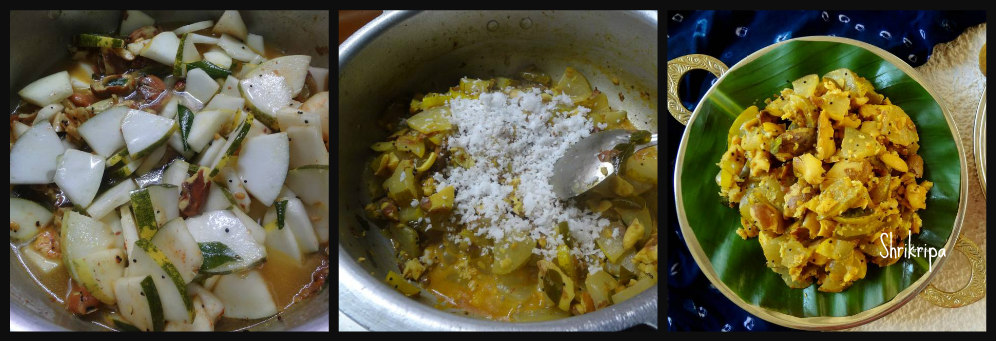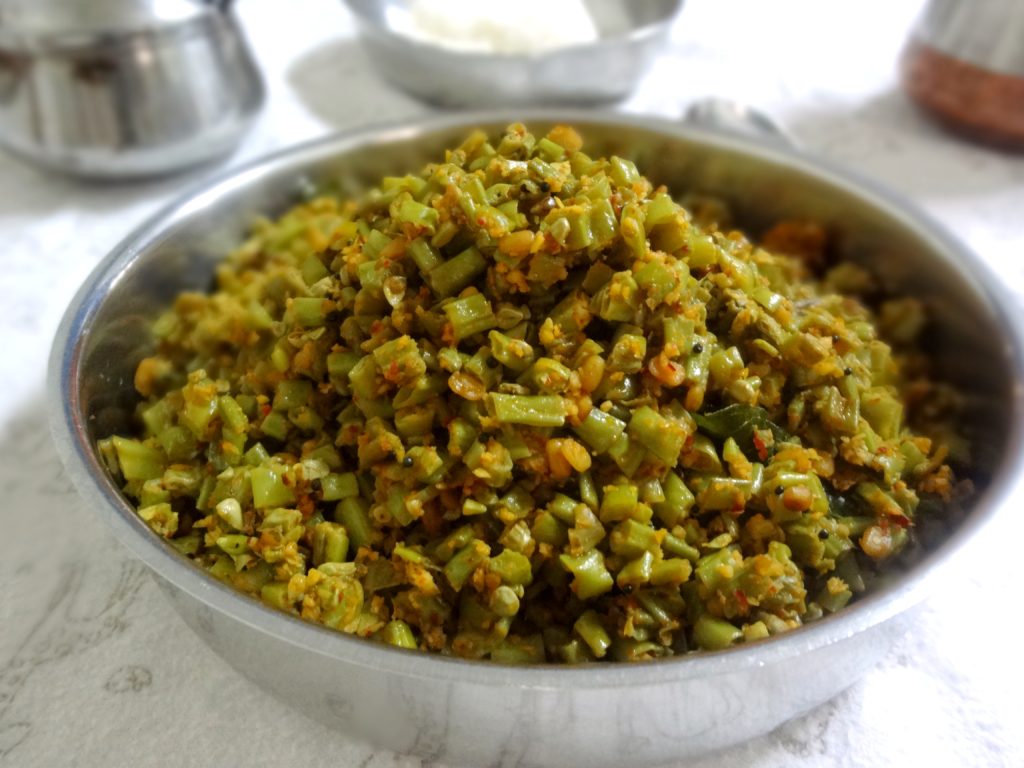Kantola has many names like Spine gourd, Teasel Gourd, phagila, Mada hagala, locally we call this as “Kaadu peere” in Mangalore. Kantola is one of the famous and nutritious vegetable of coastal region and some Eastern parts of states. This monsoon vegetable is loved by all. This resembles a bitter gourd in structure, but not in taste. It is a crunchy mild flavoured vegetable. It is a great health food as it is rich in proteins, iron and anti-oxidants and low in calories. It is high in fibre too.
In my family, we usually relish this in tawa fry form. Let’s see how I do this.

Ingredients:
Kantola: 5 to 6
Salt to taste
Red chilli powder – ½ tsp
Turmeric – ½ tsp
Asafoetida / hing powder – ¼ tea spoon
Coconut oil – to shallow fry
Ingredients for outer cover:
Chiroti/fine rawa – 1 small cup
Rice flour – 1 table spoon
Salt
Asafoetida powder – ¼ to ½ tsp.
Red chilli powder – 1 tsp
Method:
-Wash Kantola and slice them into a very thin slices. Don’t remove outer skin or inner seeds. Use as it is.

– Sprinkle salt, red chilli powder, hing, turmeric on these slices and mix this nicely by using your hand and keep aside for 10 to 15 minutes to marinate.
-While marinating it will leave some water and it helps to hold outer coating.
– Now take one bowl, dry mix all the ingredients like fine rawa, rice flour,salt, asafoetida, red chilli powder, for outer cover.don’t add any water.
– Now take each marinated Kantola piece and roll both the sides over rawa mix, keep aside after coating one by one.
-Take one iron Dosa tawa ,heat it ,keep 6 to 7 coated pieces over it and pour one or two teaspoon of coconut oil and fry nicely on one side.

-After some time, flip the side, once again pour one tsp of coconut oil and fry this side too.
– After frying both the sides, serve this as a side dish with dhal -rice, Rasam –rice or curd- rice.
Note: You should use coconut oil and more asafoetida to get authentic taste.








































